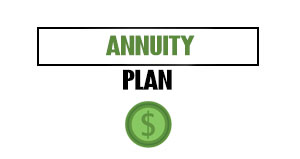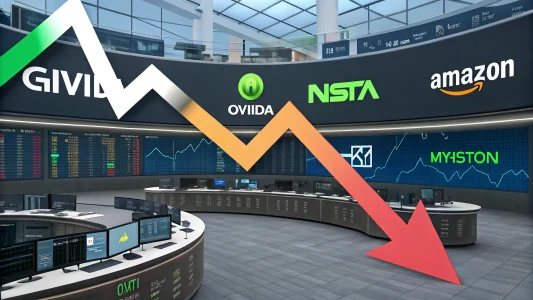Yesterday’s Federal Reserve decision gave us a rare mix of clarity and uncertainty at the same time. The Fed cut interest rates by 0.25%, the first move in this new phase of policy. Stocks jumped, then tanked, then closed flat. That kind of whiplash tells us markets are trying to process a split message: inflation progress is slow, but the Fed is now worried about the jobs market.
I’m Taylor Sohns, CEO of LifeGoal Wealth Advisors and both a CFP and CIMA. I focus every day on how policy shifts translate into real-life money decisions. The takeaway is simple: the Fed cut because it fears the labor market could weaken fast if it waits too long. Yet it also signaled that inflation is still sticky and may not reach the 2% target until 2028. That’s a long road, and it shapes how we plan for the next year.
Table of Contents
ToggleWhat Changed at the Fed Meeting
The Federal Open Market Committee voted to lower the federal funds rate by 0.25%. The decision was broad-based, with only one dissent. A recent nominee of former President Trump voted for a larger 0.50% cut. The official forecasts pushed out the expected timing for hitting 2% inflation. According to the new projections, the target may not be reached until 2028.
Jerome Powell labeled the move a “risk management” cut. He said the choice reflects the balance the Fed must strike: contain inflation without letting the labor market roll over. Unemployment is still low by historical standards, but it just hit a post-COVID cycle high. That tick higher matters because the jobless rate often rises slowly at first, then accelerates. The Fed wants to avoid a sharp snap higher.
- Rate cut: 0.25%, with one dissent favoring a 0.50% cut.
- Inflation outlook: 2% target not expected until 2028.
- Powell’s stance: “risk management” to guard against labor weakness.
- Unemployment has ticked up from lows, raising concern about momentum.
- Markets: stocks surged, dropped, and finished nearly unchanged on the headlines.
View this post on Instagram
Why the Fed Cut With Inflation Still High
This move isn’t about victory over inflation. It’s about timing. The Fed sees two threats. First, inflation remains above target, and progress is slow. Second, the labor market is showing early signs of softening. Powell is trying to land between these risks. He took a small step now to cushion jobs while keeping pressure on inflation.
In plain terms, the Fed aims to minimize the risk of a sharp downturn in employment. If they waited until layoffs grew, they might need larger cuts later. Those bigger moves can bring more market stress. A smaller cut now helps extend the economic expansion, if inflation stays contained. It’s a bet that a gentle nudge now is better than a rush later.
The inflation path matters for households. If the Fed is right that it could take years to return to 2%, rates will likely stay higher than the past decade’s norm. That means borrowing costs could remain elevated for longer than many hope. Mortgage rates, auto loans, and credit cards may ease somewhat, but they may not fall to the ultra-low levels we saw after 2008.
The Jobs Market “Snap” Risk
Powell flagged the pattern that troubles many economists. Unemployment spends months near a low, then inches higher, then jumps. Once the jobless rate starts rising in earnest, it can do so quickly as companies slow hiring and cut staff. That “snap” is what the Fed wants to avoid.
“We’re in a tough spot,” Powell said, facing inflation risk on one side and weakness in the labor force on the other.
I’ve seen how quickly conditions can change when hiring managers shift their outlook. One quarter, they talk about expansion, the next, they freeze open roles and trim headcount. Consumer confidence follows. Spending cools. Business revenues soften. Earnings estimates get cut. Markets feel it in a hurry.
The latest tick higher in unemployment may not look like much. But momentum is everything. The Fed is trying to steady that momentum before it builds. If the jobs market holds, inflation can glide down while growth continues. If it doesn’t, we’ll see more cuts, and they may come faster.
What the Market’s Whiplash Tells Us
Yesterday’s price action—a rip higher, a fast drop, and a flat finish—shows the crosscurrents in play. Traders cheer lower rates. Loans get cheaper, risk assets often climb, and valuation math looks friendlier. But they also hear the caution in the Fed’s tone. The slower inflation timeline and the mention of labor risks temper the enthusiasm.
Markets care about the “path,” not just the “print.” One 0.25% cut doesn’t change the world. The key is the pace and destination. Will the Fed keep easing? How many cuts are coming this year? What if inflation re-accelerates? What if unemployment jumps? With so many open questions, we should expect bursts of excitement followed by doubts. That churn is typical when the Fed changes gears.
As of this morning, stocks look ready to open strong. That makes sense. Lower rates support valuations and reduce financing costs. But earnings still drive long-term returns. If the economy slows too much, lower rates alone won’t save profits. I try to separate short-term moves from the bigger setup. The setup today is mixed: helpful policy, but slower inflation progress, with a watchful eye on jobs.
What This Means for Households
For families, the cut is welcome, but it’s not a magic fix. Borrowing costs may ease a bit over time. Yet they could stay higher than many remember from the past decade.
Mortgages: If rates continue to drift down, more buyers will re-enter the market. But the drop may be gradual. Refinancing can make sense if you can lower your rate by a point or more and you’ll stay in the home long enough to break even after fees.
Auto loans and credit cards: Expect some relief, but card rates remain high. Paying down high-interest balances still offers a strong return. If you carry a balance, consider a plan to reduce it over the next six to twelve months.
Savings: Yields on high-yield savings accounts and CDs may slip as banks adjust, but they remain attractive versus most of the last 15 years. Laddered CDs still make sense for some savers who want a predictable income while keeping flexibility.
What This Means for Investors
Equities: Rate cuts can support equities, yet leadership may rotate. If the economy cools without a recession, quality growth and defensive sectors often do well. If the jobs market weakens more, staples, healthcare, and utilities can help steady a portfolio. Technology and cyclicals can still lead on soft-landing hopes, but they carry more swing if growth slows.
Bonds: Duration becomes more attractive when the Fed shifts to easing. Intermediate-term Treasuries and high-quality corporates often benefit as yields fall. If you have been short duration, consider whether it’s time to add some interest rate exposure. Credit risk deserves careful review. If unemployment rises, lower-quality bonds can widen out. I favor core, high-quality fixed income as the first step in a rate-cut cycle.
Cash: Cash has paid well, but that may change as cuts continue. It still has a role for stability and near-term needs. For longer horizons, cash drag is real. Building a bond sleeve can put idle cash to work without taking equity-like risk.
Asset mix: A balanced approach helps in a two-sided risk world. Inflation is not back to target, and jobs may be softening. Diversification across stocks, bonds, and cash is still the most practical base. Concentration in one theme or sector has worked at times, but it raises the stakes if the macro picture shifts.
Why 2028 Matters
The 2028 inflation timeline is more than a number. It hints at a long period of “higher than hoped” prices. Wage growth, housing costs, and services inflation can be sticky. The Fed believes it will take patience to bring inflation to 2% and keep it there. That’s why yesterday’s move was modest. They want flexibility. If inflation stalls, they can pause. If jobs weaken, they can cut again.
For planning purposes, this means we should avoid betting on a quick return to ultra-low rates. Businesses should stress-test budgets at current borrowing costs. Homebuyers should model payments with only a modest rate decline. Investors should prepare for a path of two steps forward, one step back.
The Dissent and What It Signals
The single dissent favoring a 0.50% cut speaks to the risk management debate inside the Fed. Some see a need to move faster before the job market turns down. Others want to move more slowly because inflation progress is still slow. The majority chose the middle ground. In my view, this is the Fed we have now: cautious, data-dependent, and sensitive to both sides of the mandate.
A larger cut could have delivered a bigger confidence boost in the short run. It also could have scared markets into thinking the Fed sees trouble we don’t. More minor cuts signal steady hands. They also buy time to see if unemployment stabilizes. If the following jobs reports show renewed strength, the Fed can pause. If not, more cuts are right there on the table.
What I’m Watching Next
First, the labor data. Weekly jobless claims, monthly payrolls, and the unemployment rate matter more than ever. A steady job market keeps a soft landing in play. A quick rise in unemployment tilts the path to more easing and more caution for risk assets.
Second, inflation details. Headline numbers draw headlines, but services inflation and housing are the key pieces. If shelter costs ease faster, the timeline to 2% could move forward. If services remain stable, the path remains slow.
Third, corporate earnings. Rate cuts help margins at the edges, but earnings drive stock prices. Watch revenue growth, guidance, and comments on hiring. If CEOs start using words like “freeze,” prepare for more volatility.
“This was a risk management cut,” as Powell framed it. It was not a victory lap. It was a hedge against a possible turn in jobs, with an eye on sticky inflation.
I welcome the shift. It addresses the risk that tends to hurt households most: job loss. But it also asks for patience. The Fed is signaling a long fight against inflation and a careful approach to easing.
For investors and families, the playbook is steady and simple: mind your cash needs, keep quality at the core of your fixed income, and avoid chasing every market pop. Stay invested, but stay balanced. Flexibility beats certainty in a world with two-sided risks.
Frequently Asked Questions
Q: How soon will borrowing costs drop for mortgages and credit cards?
Lenders adjust at different speeds. Mortgage rates may ease over months, not days. Credit card rates can take longer to fall, and they often stay elevated compared with mortgages and auto loans.
Q: Does a 0.25% cut mean a rally in stocks is guaranteed?
No. Rate cuts can support stocks, but earnings and economic data matter more. If the labor market weakens or inflation flares, stocks can swing in either direction.
Q: What should long-term investors change in their portfolios now?
Consider adding high-quality bonds to capture falling yields, keep a balanced equity mix, and avoid overreliance on cash. Revisit your goals and time horizon before making significant changes.

















